CLL Systems Sdn Bhd is a Malaysia Ministry of Finance (MOF) registered company.
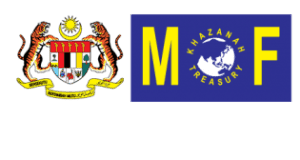

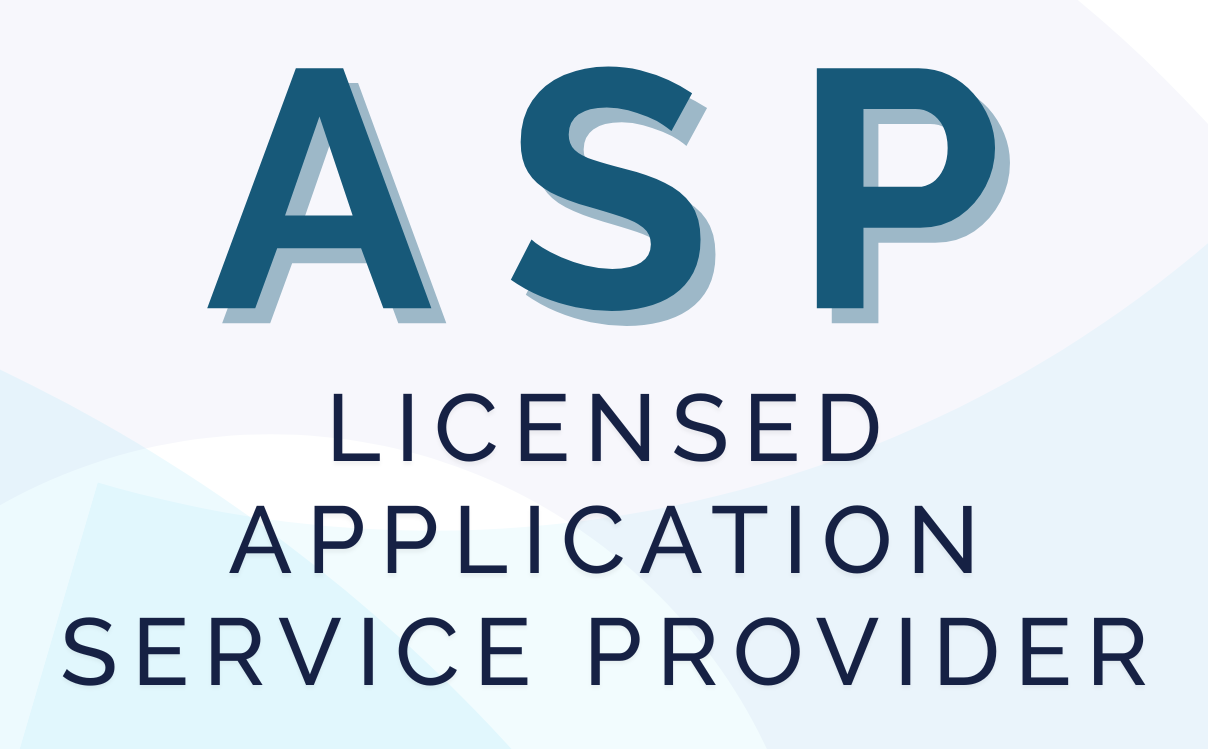
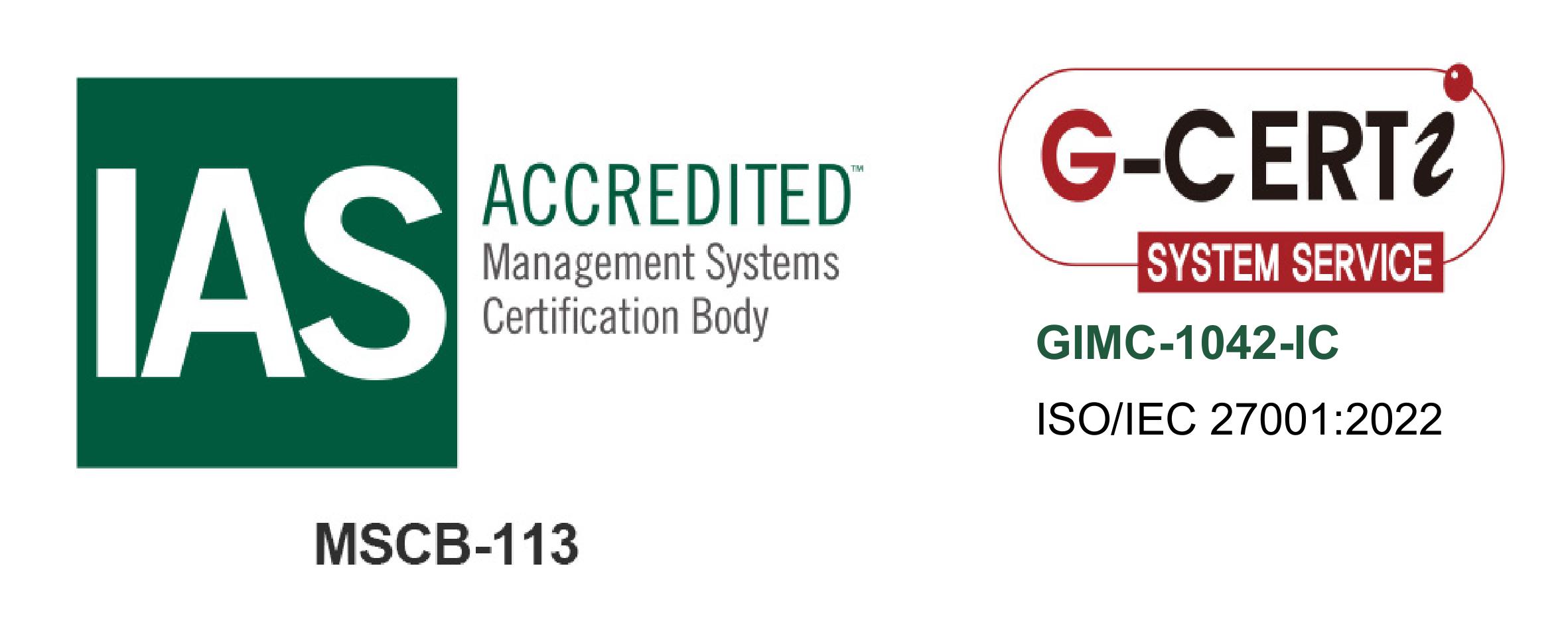
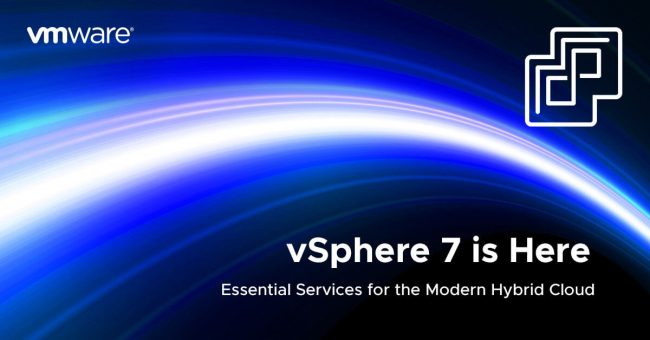
March 2020 – We are excited to share that VMware introduced the most comprehensive software stack for modern applications – the VMware Tanzu portfolio, VMware Cloud Foundation 4 and vSphere 7. These offerings provide a new way for organizations to think about their application modernization initiatives.
vSphere 7 is the biggest release of vSphere in over a decade and delivers these innovations and the rearchitecting of vSphere with native Kubernetes that we introduced at VMworld 2019 as Project Pacific.
The headline news is that vSphere now has native support for Kubernetes, so you can run containers and virtual machines on the same platform, with a simple upgrade of the system that you’ve currently standardized on and adopting VMware Cloud Foundation. In addition, this release is chock-full of new capabilities focused on significantly improving developer and operator productivity, regardless of whether you are running containers.
vSphere 7 powers VMware Cloud Foundation, which enables customers to deliver apps to any cloud while ensuring security, performance, and resiliency. Using vSphere 7 and VMware Cloud Foundation, you can improve the security, performance, and resiliency of your infrastructure as you accelerate your digital transformation journey without incurring big disruptions to your people, process and technology investments.
Now, let us look at some of the key capabilities in vSphere 7.
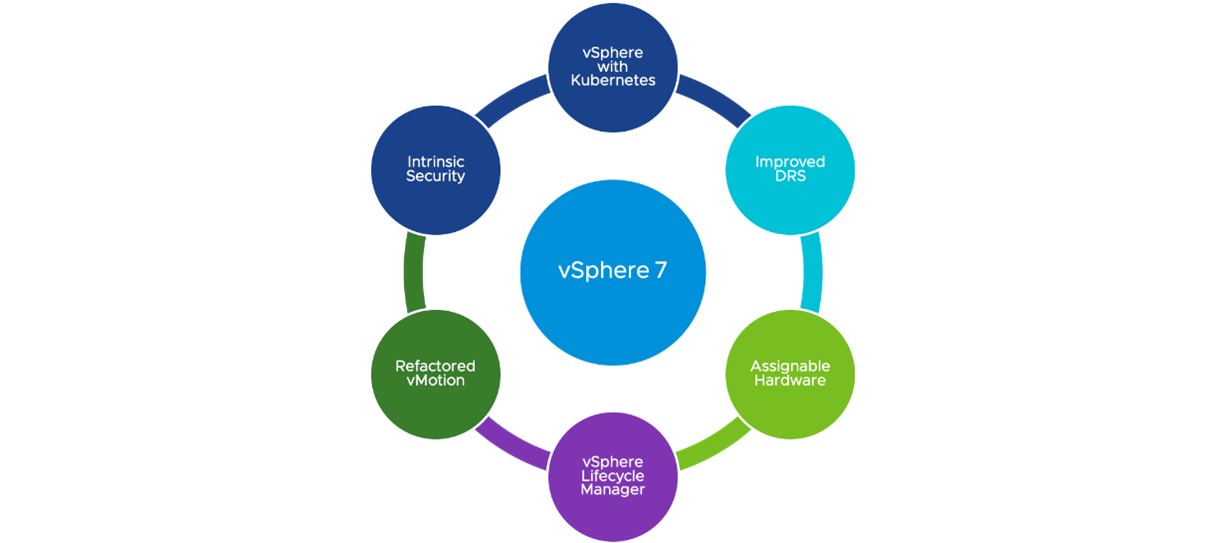
The Threat Meter provides at-a-glance threat analysis results.
vSphere with Kubernetes
The first of the vSphere 7 features is vSphere with Kubernetes (formerly Project Pacific). This is a big topic and we have plenty of content planned to dive deeper into how vSphere has been transformed in order to support both VMs and containers. As Krish mentioned, Tanzu Kubernetes Grid Service is how customers can run fully compliant and conformant Kubernetes with vSphere. However, when complete conformance with the open source project isn’t required, the vSphere Pod Service can provide optimized performance and improved security through VM-like isolation. Both of these options are available through VMware Cloud Foundation 4.
The important takeaway is that Kubernetes is now built into vSphere which allows developers to continue using the same industry-standard tools and interfaces they’ve been using to create modern applications. vSphere Admins also benefit because they can help manage the Kubernetes infrastructure using the same tools and skills they have developed around vSphere. To help bridge these two worlds we’ve introduced a new vSphere construct called Namespaces, allowing vSphere Admins to create a logical set of resources, permissions, and policies that enable an application-centric approach.
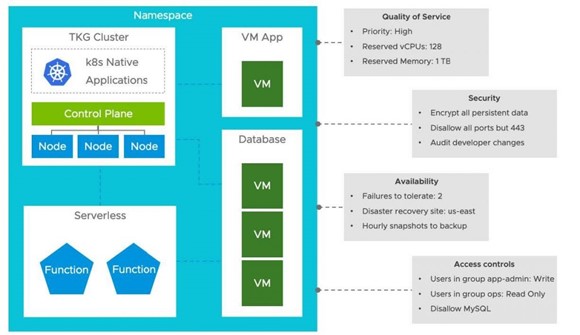
If Kubernetes isn’t on your radar, we still have plenty of new and improved features in this release. In fact, we’ve made large steps forward for two of our most mature technologies: DRS and vMotion. In addition to Namespaces, we have quite a few brand new features to discuss.
Improved Distributed Resource Scheduler (DRS)
vSphere DRS has been reimagined to better serve both containers and VMs. DRS used to focus on the cluster state and the algorithm would recommend a vMotion when it would benefit the balance of the cluster as a whole. This meant that DRS used to achieve cluster balance by using a cluster-wide standard deviation model.
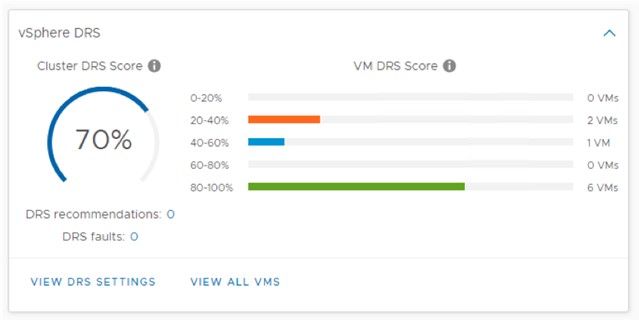
But, what about individual VMs? How would that vMotion impact the VM that was moved or it’s old or new neighbors? The new DRS logic takes a very different approach that addresses these questions. It computes a VM DRS score on the hosts and moves the VM to a host that provides the highest VM DRS score. The biggest difference from the old DRS version is that it no longer balances host load. This means DRS cares less about the ESXi host utilization and prioritizes the VM “happiness”. The VM DRS score is also calculated every minute and this results in a much more granular optimization of resources.
Assignable Hardware
In vSphere 7, there is a new framework called Assignable Hardware that was developed to extend support for vSphere features when customers utilize hardware accelerators. It introduces vSphere DRS (for initial placement of a VM in a cluster) and vSphere High Availability (HA) support for VM’s equipped with a passthrough PCIe device or a NVIDIA vGPU. Related to Assignable Hardware is the new Dynamic DirectPath I/O which is a new way of configuring passthrough to expose PCIe devices directly to a VM. The hardware address of a PCIe device is no longer directly mapped to the configuration (vmx) file of a virtual machine. Instead, it is now exposed as a PCIe device capability to the VM.
Together, Dynamic DirectPath I/O, NVIDIA vGPU, and Assignable Hardware are a powerful new combination unlocking some great new functionality. For example, let’s look at a VM that requires an NVIDIA V100 GPU. Assignable Hardware will now interact with DRS when that VM is powered on (initial placement) to find an ESXi host that has such a device available, claim that device, and register the VM to that host. If there is a host failure and vSphere HA kicks in, Assignable Hardware also allows for that VM to be restarted on a suitable host with the required hardware available.
vSphere Lifecycle Manager
vSphere Lifecycle Manager accounts for a number of the new vSphere 7 features, bringing a suite of capabilities to make lifecycle operations better. With vSphere Lifecycle Manager we have a paradigm shift in both vCenter Server and ESXi host configuration management. Using a desired state configuration model, vSphere Administrators can create configurations once, apply them, and continue to monitor that desired state through new tools called vCenter Server Profiles and Image Cluster Management. vCenter Server Profiles enable administrators to standardize on a configuration for all of their vCenter Servers and monitor to protect against configuration drift.
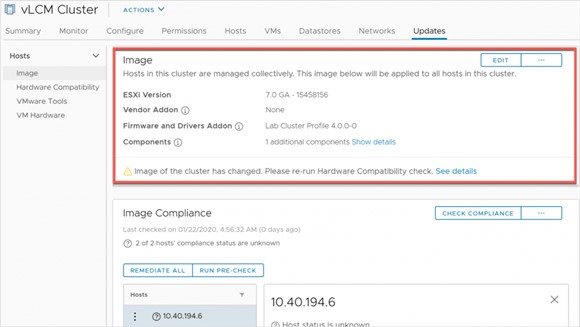
Cluster Image Management allows administrators to create images at the cluster level that dictate how hosts within the cluster will be configured. A cluster image can comprise the vSphere (ESXi) release, a vendor add-on (which would be the delta between the gold ESXi image and the OEM ISO in VUM terminology), and a firmware add-on which would allow vSphere Lifecycle Manager to communicate with a vendor provided firmware management tool (or Hardware Support Manager) such as Dell OMIVV. Our partners at this launch are Dell EMC and HPE with more to come.
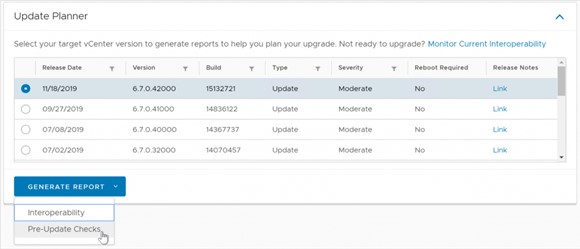
Third, inside vSphere Lifecycle Manager we have vCenter Server Update Planner. vCenter Server Update Planner provides native tooling to help plan, discover, and upgrade customer environments successfully. Receive notifications when an upgrade is available directly in the vSphere Client. Then use Update Planner to easily monitor the VMware product interoperability matrix to ensure that the available upgrade is compatible with other VMware software in the environment. Run a suite of available prechecks to assist with version compatibility prior to beginning an upgrade. Everything is good? You’ll have a successful upgrade, with no surprises.
It is important to note that vCenter Server Update Planner only works with vSphere 7 and onwards. So, Update Planner cannot help plan your upgrade from vSphere 6.x to vSphere 7 but it will drastically simplify your upgrades once you are running vSphere 7.
Refactored vMotion
As with DRS, we needed to review the vMotion process and look closely at how we could improve vMotion to support today’s workloads. VMs with a large memory & CPU footprint, like SAP HANA and Oracle database backends, had challenges being live-migrated using vMotion. The performance impact during the vMotion process and the potentially long stun-time during the switchover phase meant that customers were not comfortable using vMotion for these large workloads. With vSphere 7, we are bringing back that capability as we have greatly improved the vMotion logic.
At a high level, vMotion is comprised of several processes. For most VMs these processes can execute very quickly, often fast enough to not be noticed. For VMs that have large CPU and memory allocations these processes can become noticeable, and even last long enough for the application running within the VM to think there is a problem. So, several of those processes have been improved to mitigate vMotion issues for those larger VMs. One such process uses page tracers where vMotion keeps track of memory paging activity during a migration. Prior to vSphere 7, page tracing occurred on all vCPUs within a VM, which could cause the VM and its workload to be resource constrained by the migration itself. With vSphere 7, a dedicated vCPU is used for page tracing which means that the VM and its applications can keep working while the vMotion processes are occurring.
Another process that was improved was the memory copy. Prior to vSphere 7, memory was transferred between the hosts in 4k pages. vSphere 7 now uses 1 GB pages, along with a few other optimizations, to make this data transfer much more efficient. To make sure the stun time stays within the 1 second target (the time when the switch over between hosts occurs), the VM state and the bitmap of the memory pages are transferred. This stun time is important and with very large VMs, it becomes difficult to transfer that bitmap in less than the desired 1 second. So, instead of transferring the entire bitmap – which could be hundreds of megabytes in size for large VMs – only the pages required are transferred. Most of the pages are actually already on the destination host from the original transfer so we can reduce the transfer time from seconds to milliseconds.
As with all topics in this post, more details will be available – as upcoming posts here – on this new process. The key end result is that vMotion can now be used for even the largest of VMs.
Intrinsic Security
One of the biggest ways that our customers can improve their security is through good password policies, and one of the easiest ways to do that is to implement multifactor authentication (MFA). The problem, then, is that there are so many ways to implement MFA, and it’s nearly impossible to extend vCenter Server with all of them. Furthermore, even if VMware implements some of them, we’re duplicating what many customers already have in their corporate identity management systems, and that doesn’t mesh with our desire to make life better for our users, the vSphere Admins.
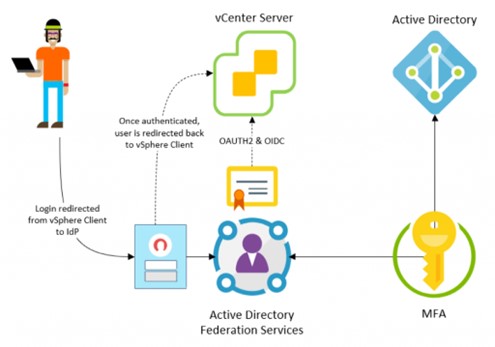
The solution is federation using open authentication & authorization standards like OAUTH2 and OIDC. With vSphere 7 and Identity Federation, vCenter Server can talk to an enterprise identity provider and get the vSphere Admins and vCenter Server out of the process. This simplifies the vSphere Admin’s job and reduces helps reduce compliance audit scope. It also opens the door to lots of different MFA methods because they already know how to plug into things like Active Directory Federation Services (ADFS). With vSphere 7 we are supporting ADFS out of the box and will build support for more providers over time.

We’re also introducing vSphere Trust Authority (vTA), helping to make it easier to establish trust throughout the entire stack – from bare metal all the way through the workloads. vSphere Trust Authority creates a hardware root of trust using a small, separately-managed cluster of ESXi hosts which takes over the task of attestation. Host attestation is where the UEFI Secure Boot process, a server’s Trusted Platform Module (TPM), and an external service work together using cryptographic to verify that the host is running authentic software, in a good configuration.
In vSphere 7, vTA gives attestation the ability to enforce the rules by having the trusted hosts take over the communications with the key management systems (KMSes). This simplifies the connections to the KMSes, which simplifies risk auditing, as well as ensuring that a host that fails attestation doesn’t get access to secrets. Without those secrets the host can’t run an encrypted VM, which is good. We don’t want a secured VM on an untrusted server.
Certificate management also continues to be improved by reducing the amount of certificates that are required to be managed as well as the introduction of a new certificate import wizard. Solution User certificates no longer need to be managed and ESXi has also been simplified so that its services use a common certificate. Last, there is a REST API for operations such as renewing a certificate from the VMware Certificate Authority (VMCA), making the process easier to automate.
Other Improvements
This blog post is not meant to be exhaustive but there are a few other vSphere 7 features that I’d like to mention. First, we’ve continued to simplify the vCenter Server architecture. With vSphere 7, there is no longer the ability to deploy external Platform Services Controllers (PSCs) or vCenter Server for Windows. If you have either of these types of deployments, the vCenter Server 7 installer will automatically migrate that vCenter Server instance to a vCenter Server appliance with an embedded PSC. There is no multi-step process that involves multiple tools. It is an integrated, seamless experience.
Support has also been added for multiple NICs for the vCenter Server appliance, new CLI Tools, and an improved Developer Center in the vSphere Client. There is a new VM Hardware version, 17, that brings more new features like a precision clock for PTP support, vSGX, and a virtual watchdog to help monitor clustered applications. Over the course of the next few weeks we’ll be releasing detailed blogs on all these vSphere 7 features and more. Please stay up to date through the links and information posted in the footer below.
Conclusion
As you may have gathered by now, vSphere 7 really is a substantial and game-changing release. There has been a big focus on making our customers’ lives better through the lifecycle and security improvements. We also continue to keep pushing the boundaries of what is possible thanks to our great partnerships and customers. And, with the addition of Kubernetes, we’re not slowing down any time soon. vSphere 7 is technology for the hybrid cloud.
For more information, please refer to VMware.
CLL Systems Sdn Bhd is a Malaysia Ministry of Finance (MOF) registered company.




© 2016-2025 CLL Systems Sdn Bhd. All Rights Reserved Privacy Policy